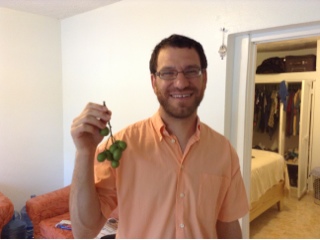Though we were home for two weeks, it was a bit of a whirlwind. Santo Domingo, Seattle, Olympia, Vancouver, Corvallis, Bend, Portland, Olympia, New York, Boston, Punta Cana. We spent no more than three nights in one location, and most places we stayed for less than 48 hours. It was wonderful to see so many friends and family, even if just for quick visits.
Still, it was a good reminder as to why our home is in the Northwest. Yes, it's nice to be from a place with beautiful views, when the clouds part. And I like how when I accidentally open my mouth in shower I don't have to immediately spit out the water for fear that it might cause a gastrointestinal illness. Plus there is the endless variety of restaurants. It is without a doubt a comfortable life in the Northwest, but most of all it is a life with lots of family and friends nearby.
We are very friendly with our coworkers at our various volunteer sites here in the DR and it has been incredible living so close to Mina. We don't, however, have close Dominican friends and attempting to play hide and seek with Vida and Simone via Skype just isn't quite the same as doing it in person. It's hard enough to stay in touch with people when we live in the same city or just a state away. It has proved quite a bit harder maintaining contact from across the world. It's wonderful to travel, but coming home gave us a glimpse of what it means to live abroad.
Which is a funny thing because we aren't really living abroad. We're spending a year abroad, travelling, knowing we will return home. The same isn't true for so many immigrants to the U.S., including thousands of Dominicans. For economic reasons or for immigration restrictions traveling to and from the United States isn't a luxury most can afford on a regular basis. Countless times we've talked to Dominicans who haven't seen relatives for years.
In just a few months we will return to the U.S. for good. We will almost surely miss the people and sun of the DR and the daily adventures of traveling. But I have a feeling it will also be good to wake up each morning and know we are home, closer to all the people that turn a place into a home.










































